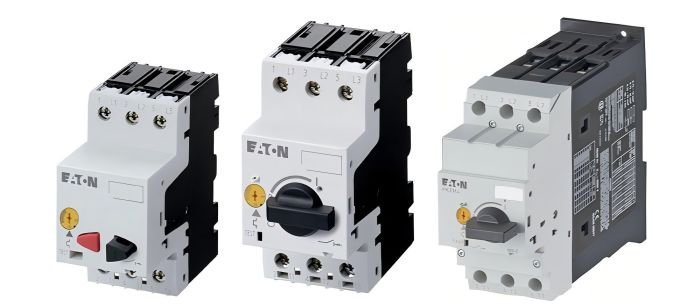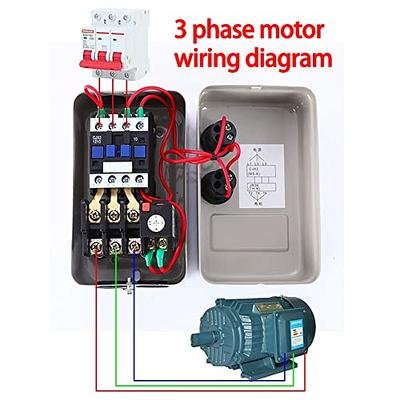How to Wire a Motor? Selecting Circuit Breakers and Thermal Relays
When building and operating a control system, accurately calculating the load is crucial for selecting the appropriate cable specifications. This is a critical step that requires careful attention.
Determining Load Size
There are various methods to determine load size. One common and straightforward method is to refer to the motor’s nameplate, which typically displays important parameters. Additionally, you can use professional formulas to calculate the load size accurately. Although there’s also a simplified empirical algorithm, which, while not always 100% accurate, can provide a good reference in less critical scenarios.

Common Wiring Methods for Three-Phase Asynchronous Motors
Three-phase asynchronous motors typically use either a star connection or a delta connection. Except for smaller motors, most motors use a delta connection. For example, a 7.5kW motor powered by 380V would have an approximate rated current of 15A per phase. This estimated current can guide the selection of the appropriate cable size.
Determining Cable Size Based on Current
Using copper cables as an example, if a motor has a power of 18.5kW, the rated current is about 37A. A common rule of thumb is that 1 square millimeter of copper wire can carry 4 to 6A. Therefore, the required cable cross-sectional area would be 37 ÷ 5 = 6.4 square millimeters. Depending on the specific load requirements and safety considerations, you might choose a 10 square millimeter cable, especially if the motor operates near its full load capacity.
Selecting Circuit Breakers and Thermal Relays Based on Motor Power
For a three-phase motor, knowing the rated voltage, power, and current is essential. For instance, for a 7.5kW, 4-pole motor with a rated current of approximately 15A:

- Circuit Breaker: Typically, a circuit breaker rated at 1.5 to 2.5 times the motor’s rated current is selected, such as a DZ47-60 32A.
- Wiring: Based on a 15A rated current, a suitable wire with a current-carrying capacity is selected. For frequent motor starts, a thicker wire might be preferred; otherwise, a slightly thinner wire could suffice. For example, a 4 square millimeter wire might be chosen.
- AC Contactor: Select an AC contactor that matches the motor’s power, usually 1.5 to 2.5 times the motor’s rated current, like a Chint CJX2-2510. Ensure the auxiliary contacts are sufficient for the application.
- Thermal Relay: The thermal relay’s setting current can be adjusted, usually set to 1 to 1.2 times the motor’s rated current.
Wiring Multiple Motors
- Add the total power of all motors and multiply by 2 to determine the total current.
- For wiring distances within 50 meters, divide the total current by 4 to determine the wire size.
- For wiring distances beyond 50 meters, divide the total current by 3.
- For cables above 120 square millimeters, use a lower current density.



